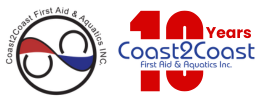This blog is here to guide you through the process of getting your CPR recertification, as well as alleviate any doubts as to why you might need it.
To lay the groundwork for this, here are a few reasons why anyone already certified should still get re-certified every three years, or more frequently if you are a medical practitioner.
-
Skill Retention Concerns
Once you’d gone through your initial training, you received all the knowledge and skill necessary to perform this lifesaving technique on another person. As the years go by, however, can you be absolutely sure that all the knowledge and skills you attained during that first course are still with you? Moreover, are you willing to find it out in a life-threatening situation? Just as is the case with any acquired skill, a lack of practice dulls the reflexes and erodes memory. Refreshing it is as vital as learning it in the first place.
-
New Practices and Rules
The medical field, just as everything else in our lives, does not stand still. Better, more efficient and innovative methods are developed rapidly. The CPR and first aid courses you took three years ago taught the best practices known at the time. Learning newer methods now will increase your efficiency at dealing with the emergency.
-
Laws and Liabilities
This may be a source of some frustration, but the fact is that the law treats a person who knows CPR yet doesn’t have a valid certificate, as if they weren’t trained at all. There is much damage that can result in someone applying CPR when they are untrained, and this is a precaution set in place to prevent it. Of course, if there is no other choice, an untrained (or not recertified) individual may decide to step in and assist, but the legal implications may be bad.
How to get CPR Recertified?
The good news is that recertification is even faster than initial first aid courses or first time cpr courses you took. The process of CPR recertification is pretty simple – you get to take a quick online refresher course for the knowledge set needed to perform CPR, and then proceed to a quick skill test in one of our many CPR training facilities conveniently located all around the Greater Toronto Area.
And finally, don’t look at this as an obstacle, but an opportunity.
An opportunity to enhance your skills, learn new ones and ultimately be better equipped to help save someone’s life.



